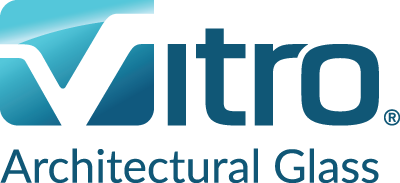Improving U-Value: Driving Energy Efficiency and Sustainability
How U-value impacts performance, methods for improvement and why prioritizing lower U-values can transform projects

- Project: UC San Diego Torrey Pines Living & Learning Neighborhood
- Product: Solarban® 70 Glass
- Architects: HKS Architects, Safdie Rabines Architects
- Glass Fabricator: Glasswerks NWI
- Glazing Contractor: Tower Glass, Inc.
- General Contractor: Clark Construction Group
- Photographer: Tom Harris
 Architects, glaziers and fabricators are faced with a variety of sustainability demands and stringent energy performance targets in today’s construction landscape. With more focus than ever on reducing carbon footprints and increasing energy efficiency, improving the U-value of architectural glass has become a critical factor in modern building design.
Architects, glaziers and fabricators are faced with a variety of sustainability demands and stringent energy performance targets in today’s construction landscape. With more focus than ever on reducing carbon footprints and increasing energy efficiency, improving the U-value of architectural glass has become a critical factor in modern building design.
Let's dive into how U-value impacts performance, methods for improvement and why prioritizing lower U-values can transform projects.
What is U-Value, and Why Does It Matter?
U-value, also referred to as U-factor, measures the rate of heat transfer through glass. Essentially, it quantifies how well— or poorly— a window insulates against heat loss or gain. Lower U-values indicate better insulation, meaning less heat is lost in winter or gained in summer.
Measured in British Thermal Units (BTUs) per square foot per degree Fahrenheit (°F) of temperature difference, U-value is critical for understanding how glass contributes to energy efficiency. For industry professionals, optimizing this value is essential to meeting today’s thermal performance and energy codes.
Key Benefits of Lower U-Values
Improving the U-value of architectural glass comes with multiple advantages for buildings and their occupants.
-
Energy Savings: Reducing heat transfer lowers heating and cooling energy consumption, significantly cutting annual utility costs for building owners.
-
Carbon Footprint Reduction: Choosing high-performing thermal glass helps decrease carbon emissions, contributing to a more sustainable built environment.
-
Enhanced Comfort: Improved insulation ensures consistent indoor temperatures, improving occupant comfort throughout the seasons.
-
Compliance with Standards: Achieving low U-values ensures compliance with increasingly strict building codes and provides credits toward green certifications like LEED®.

- Project: Lafayette College - Markle Hall
- Products: AviProtek® #217 (1) Solarban® 90 (2) Clear + VacuMax™ Vacuum Insulating Glass (Double Silver Low-e)
- Architect: ALMA Architecture LLC
- Glass Fabricator: Glass Enterprises Inc.
- Glazing Contractor: National Glass and Metal Co., Inc.
- General Contractor: DVP Construction Group
- Photographer: Jim Cunningham
Methods for Improving U-Value
Modern technology offers architects and fabricators a range of innovative ways to achieve lower U-values, enabling improved thermal performance without sacrificing aesthetics.
1. Low-emissivity (Low-e) Coatings
Low-e coatings such as Solarban® solar control low-e coatings by Vitro Architectural Glass help minimize infrared light without reducing visible light transmittance (VLT). Solarban® glass products feature some of the highest light-to-solar gain (LSG) ratios in the industry.
In addition, Sungate ThermL™ glass by Vitro Architectural Glass – engineered for use on the interior surface of a typical one-inch insulating glass unit (IGU) – dramatically improves U-values when paired with a Solarban® solar control low-e glass on the second surface.
2. Double- or Triple-glazed IGUs
Using IGUs with two or three panes creates additional barriers to heat transfer. Each layer of glass holds a cavity, which can be filled with gas to reduce thermal conductance. Sungate® 400 glass by Vitro Architectural Glass – a highly transparent, passive low-e glass – is designed to optimize performance in triple-pane IGUs when paired with Solarban® 70 and Solarban® 60 glasses.
3. Gas Fills
Filling the space between panes with noble gases like argon or krypton reduces heat flow. These gases are denser than air, offering superior insulation to traditional air-filled cavities.
4. Vacuum Insulating Glass (VIG)
VacuMax™ vacuum insulating glass (VIG) by Vitro Glass integrates with any traditional glazing system to enhance the performance of any glass configuration by effectively blocking thermal transmission, delivering thermal insulation performance that is 3-5x better than conventional insulating glass and up to 20x better than monolithic glass.
5. Warm-edge Spacers
These spacers replace traditional metal elements with materials like silicone foam or stainless steel, which reduce heat conduction around the edge of the glass, where thermal bridging often occurs. Intercept® Stainless Steel Spacers by Vitro Architectural Glass are proven to be stronger and more durable than foam spacers, providing enhanced thermal performance.
6. Optimized Cavity Sizes
Adjusting the cavity size between glass panes improves thermal resistance. For instance, a ½-inch cavity with argon is ideal for maximizing energy efficiency.
Take the First Step
Improving U-values in architectural glass is a decisive step toward creating energy-efficient, comfortable and environmentally friendly spaces.
At Vitro Architectural Glass, we’re proud to deliver innovative solutions that transform buildings while meeting the highest thermal performance standards. Contact us to learn how we can help elevate your next project: vitroglazings.com/contact.

